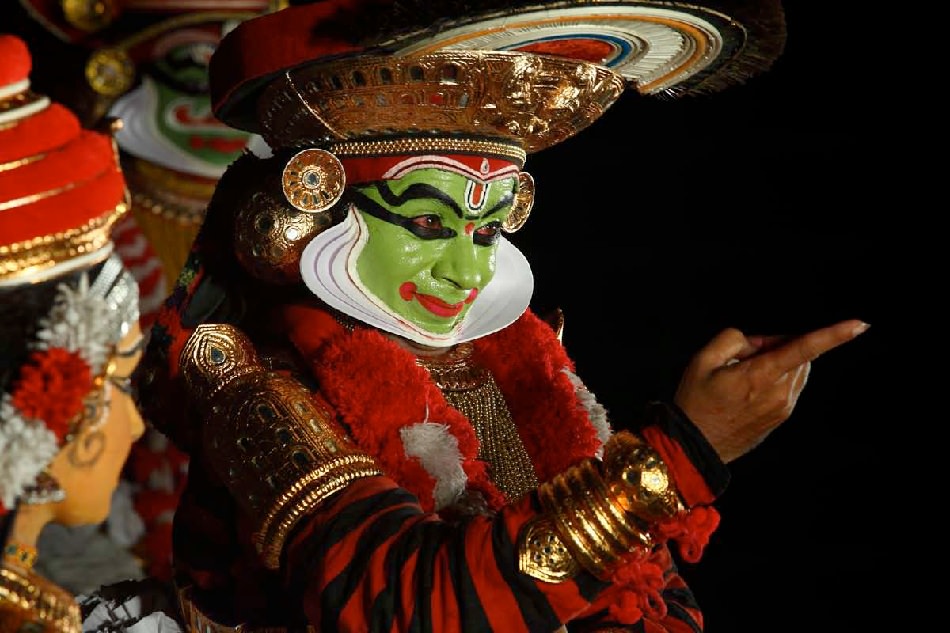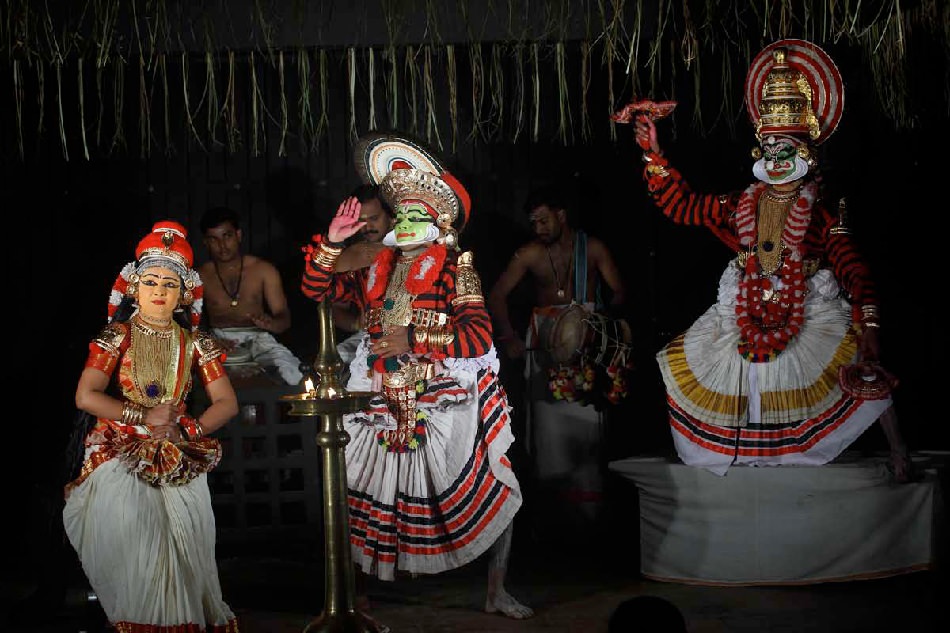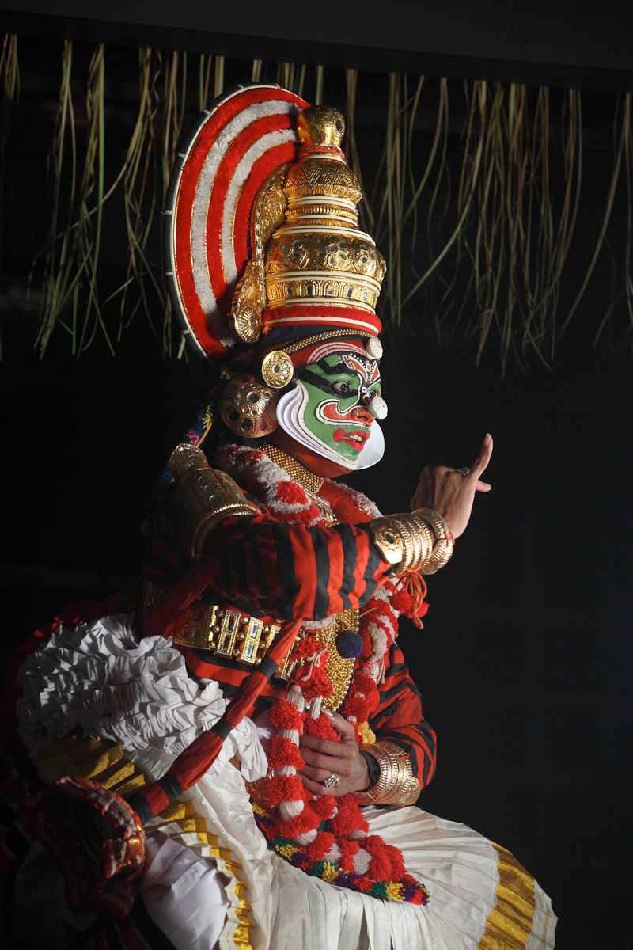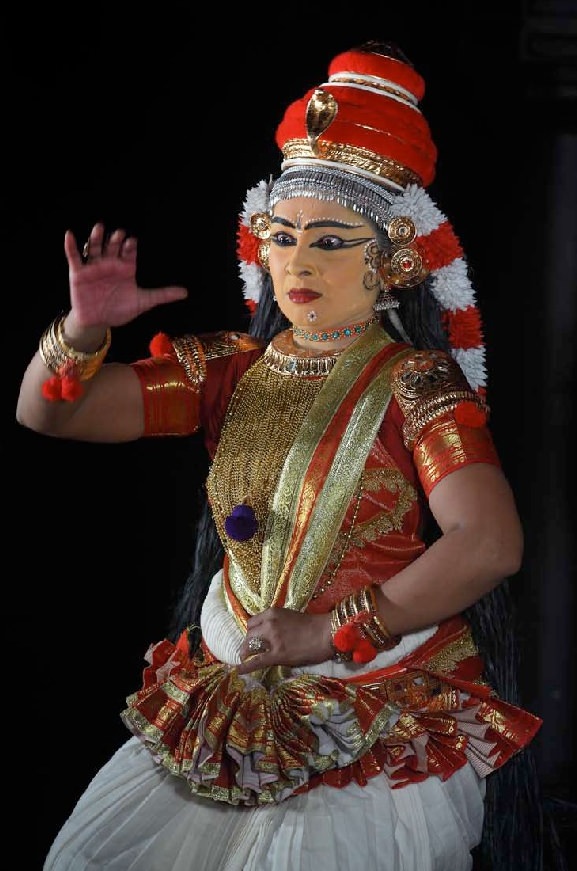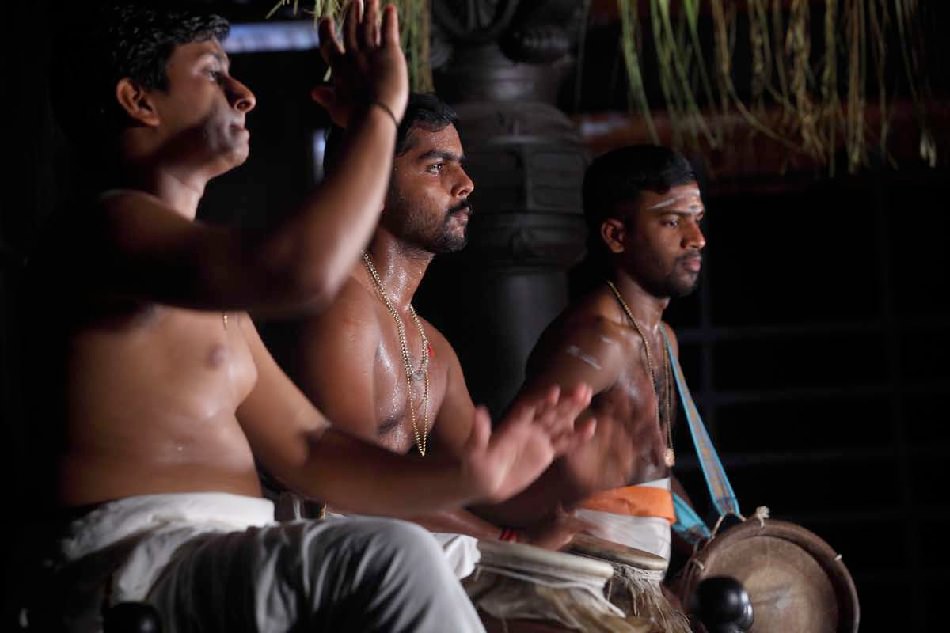I have a weakness for masterpieces that are on the verge of disappearing from the historical record. As it happens, in the areas in which I work—the Telugu, Tamil, and Malayalam cultures of southern India—there is no dearth of such threatened treasures. For the last two decades, for example, I’ve been hunting down major works of Telugu poetry composed over the last two hundred years in the tiny kingdoms of the northern Andhra coast, on the Bay of Bengal. Poets of genius, working in places with beautiful names like Madugula, Bobbili, Pakki, and Vizianagaram, produced these texts for a now vanished audience of connoisseurs; the vast majority of them have been lost, probably forever. Once in a while I get lucky and turn up a copy, riddled with holes made by termites and white ants and stained by mold but still more or less legible. Those are the good moments in what is usually a frustrating, indeed almost fruitless quest.
Sometimes, however, there are even more dramatic discoveries—of ancient art forms and practices that have remained vital to this day. Imagine a classicist who, visiting some remote Ionian valley, stumbles on an unknown, uninterrupted performance tradition of classical Greek tragedy going back to the days of Sophocles. In fact, something like this happened on a different stretch of Indian coast, in the southwestern state of Kerala, where scholars have encountered a living tradition of classical Sanskrit drama that has survived intact for more than one thousand years. It is called Kudiyattam—literally, “performing or playing together”; the name may reflect the presence on stage of one or more actors closely attuned to drummers playing the ancient, free-standing mizhavu drums, or it may point to the moment, common to many of the dramas performed, when a lone actor—who has held the audience in thrall over many nights—is joined by another.
Kudiyattam performances are never short. In their natural form, they range from twelve hours to over one hundred and fifty hours. This summer I spent all of August in central Kerala with my Sanskrit and Malayalam students, witnessing one of the great compositions of this tradition, the so-called Anguliyankam, or Drama of the Ring, which went on for some 130 hours spread over twenty-nine nights.
Kudiyattam plays, always based on classical Sanskrit texts, many of them composed in Kerala, invariably include a long nirvahanam or “retrospective” in which a character reveals, mostly by the silent language of hand- and eye-gestures, abhinaya, the long process that has brought him or her to the present moment in the play. In the course of performing this retrospective, the solitary actor frequently adopts other personae, always signaling such a transition by a coded move familiar to the spectators—usually by tying or untying the tasseled ends of a long cord that forms part of his elaborate costume of red, white, and black cloth, rich ornament with many reflecting surfaces, and a high headdress. This condensation of many voices in a single actor (called pakarnattam, “exchanging roles”) is a hallmark of the tradition and a clear innovation in relation to what we know of classical Sanskrit drama. Sanskrit verses and prose passages from the original text of the play are recited, or rather sung, always in a peculiar, high-pitched musical style that includes several distinct ragas or recitation modes; but the great bulk of the performance is devoted to the actor’s silent enactment and elaboration of such passages, to the accompaniment of the drums.
For many centuries, Kudiyattam was largely a temple art; the performers, from the Cakyar and Nambyar communities (the former supplying the main actors, the latter the drummers, make-up artists, and actresses), were temple servants, living off the temple lands and performing for the benefit of the god and of a mostly elite audience familiar with Sanskrit and the arcane language of gestures. Their repertoire included a series of melodramatic one-act plays on themes taken mostly from the great epics or single acts extracted from much longer works, such as the seven-act Ascarya-cudamani, or Marvelous Jewel on the Head, by the great Kerala poet Saktibhadra (perhaps tenth century), who reworked the story of the Sanskrit epic Ramayana in highly original ways. In the Kudiyattam tradition, such single acts, disassembled from the original text, drastically rearranged and enormously expanded, are the main unit of performance.
This year’s play, the Drama of the Ring, tells of how the monkey Hanuman arrives in Lanka (probably modern Sri Lanka) in search of Sita, the high-spirited and virtuous heroine of the Ramayana. Sita has been kidnapped by the alluring and lovable demon Ravana, with his ten heads, the ruler of Lanka. Hanuman is carrying a ring from the man-god Rama, Sita’s husband, to authenticate his embassy; hence the name of the play. Finding Sita under a tree in Ravana’s garden, he gently introduces himself (he is afraid that the sudden appearance of a Sanskrit-speaking monkey will unnerve her); toward the end of the twenty-ninth night of the performance, he eventually gives her the ring and promises her that Rama will soon arrive to set her free.
Advertisement
Most of the drama, however, is taken up by a very long retrospective, in which Hanuman tells Sita, and the audience, including the god who is watching from inside the nearby temple, everything that has happened, or could ever happen, since Ravana captured her in the wilderness—and much else besides. Stories from other parts of the epic, or from its companion-text the Mahabharata, or from Hindu history and lore more widely, exfoliate night after night, each linked to or embedded in its predecessor in intrinsic, emotionally complex, non-accidental ways.
The Drama of the Ring is based on the sixth act of Saktibhadra’s play, but it has completely recast the sequence of the original Sanskrit text in order to create an entire world of visions, memories, wishes, fantasies, perceptions (both false and less-than-false), obsessive projections, lost chunks of stories—everything, in short, that must have existed in the awareness of each of its characters and that can be conjured up by the actor as he shapes or kneads the empty space around him. He does this largely through the exquisite abhinaya gestures as the drummers punctuate, intensify, and highlight his movements; though he may improvise, sometimes for long hours, he largely follows the re-ordered Sanskrit text and hand-written production manuals (attaprakaram) in Malayalam, the language of Kerala, that have been passed down through the actors’ families over many generations. Kudiyattam uses virtually no props, almost the sole exception being a small wooden stool on which the actor sometimes sits or stands; and there is always a blazing three-wick oil lamp, a necessary witness to everything that happens. For most of the Drama of the Ring, only a single actor is on stage, playing Hanuman as well as all other relevant roles, while Sita’s relatively limited, though urgent speech—mostly tado tado, “And [what happened] next?”—is uttered by a Nangyar female performer sitting on the left side of the stage and keeping time with cymbals.
As in other Kudiyattam performaces, the opening moments of the Drama of the Ring are taken up by the purappadu, or “setting out,” in which the solitary actor—to the accompaniment of Sanskrit verses of benediction sung by the Nangyar—uses an abstract progression of pure, stylized movements to generate an entire world, complete in all its parts, from Brahma the Creator down to the tiniest ants and blades of grass. It can take a few hours. When this sequence is complete, the actor plucks invisible flowers from the air and offers them to the gods and other beings he has just brought into existence. This newly imagined cosmos will envelop performers and audience alike for the duration of the play. In the final moments of the final night, the actor will take his creation apart by casting the last burning pieces of wick onto the stage and then prostrating himself full-length in the direction of the god in his shrine, who is now perhaps somewhat forlorn, stripped of the world he has inhabited together with us, the other spectators. Both moments—creating the cosmos and dismantling it at the end—are astonishing to observe.
Sitting through a play that lasts 130 hours might sound a bit exhausting, and at times, of course, one’s attention wanders. There were moments when I, like others, would fall asleep to the hypnotic beat of the mizhavu drums and wake minutes later to a world of bewildering, even outlandish, color and movement. Still, this performance changed my life and, given a few hours, I could even tell you how. I doubt that I’ll ever again have the opportunity to give myself entirely to a month-long performance that inexorably builds up to a climax of truly unimaginable power. For me, one of the most remarkable aspects of Kudiyattam is its insistence on carrying through a natural rhythm without compromise, without cutting corners, without rushing on to something else that is waiting with its own demands. I think I live my life in this constant rush toward death, almost never allowing a single movement of the body, or a single passing thought of any power or novelty, or even a single deep breath or tender gesture, to complete itself without being cut off too soon. I suppose that in this I am hardly alone. Kudiyattam is profoundly, perhaps uniquely, therapeutic in this respect.
But you shouldn’t think that this classical art is a “slow” one; in my experience—and by now our team has seen some seven full-scale plays, each one stretching over many nights and weeks—every moment is intricate, action-packed, resonant with a whole body of pre-existing texts, and irreplaceable. If you want to understand the whole, and to be moved as only the completed whole can move you, you can’t afford to miss even a single night of the entire performance. Some things in life—the best things—can’t be truncated or compressed. If it takes an hour or two to “speak,” that is, to enact in the language of gesture, a single lyrical line from a Sanskrit poem, so be it. If it takes twenty-nine nights to sculpt a fully formed reality out of empty space, or to explore the subtleties and inner meanings of longing and loss, so be it.
Advertisement
If you have never seen a dramatic performance lasting a whole month, you might consider coming to Kerala next time the Anguliyankam is staged—if there is a next time. The Nepathya troupe with whom we’ve been working, from the tiny village of Muzhikkulam, north of the port city of Kocci, had not performed this composition in its entirety for two generations. There are still a few dozen highly trained performers active in Kerala, but many of them live hand to mouth and fear their craft—despite recognition by Unesco and serious new work by scholars from Kerala and the West—may disappear. (The staging we witnessed, which on most nights drew an audience of some twenty to thirty people, was an initiative of the Hebrew University and the Rothschild foundation Yad Hanadiv, working through the Humanities Fund run by the Israeli system of higher education.)
For all that, there is still scope for great artists—such as Margi Madhu Chakyar from Muzhikkulam and his wife Margi Indu, or the master-teacher and performer Kalamandalam Rama Chakyar from Killimangalam further north—to produce works of staggering perfection. Such actors are trained from childhood, traditionally by a father or uncle, more recently by masters of the art in institutions such as the Kerala Academy of Arts (Keralakalamandalam) in Cheruturutti. Recruitment today is far more open than was once the case, and students come—not in vast numbers—from many Kerala communities. They learn Sanskrit as well as the grueling discipline of movement and gesture, including the truly remarkable use of the eyes alone to narrate a complicated story or to convey meaning and emotion.
Performances are demanding; the actor moves, dances, continuously weaves the hand gestures, and occasionally recites and sings in the tropical heat under the heavy burden of his costume. You cannot perform Kudiyattam, Margi Madhu says, without experiencing constant bodily pain. Still, despite the difficulties of training over many years, the physical and mental challenge of the performances themselves, and the battle for economic survival, I think that the tradition will go on into the next generation, however lonely the actors, and the gods they embody, may feel.
In the final night of this year’s play, in the course of an eight-hour tour de force, Lord Rama was made fully visible to those capable of imagining him together with the actor who manifests him in gesture. Believe me: It is no small matter to create God on stage. We then saw this god as he was, or is, after his wife was kidnapped—grief-stricken to the verge of madness; trying desperately to send her someone, anyone, a bee, a goose, as a messenger with a greeting of comfort and love; hallucinating; hopefully preparing a bed made from leaves and vines for her and for him in the vast wilderness where he is wandering; calling her again and again, in vain, to come to bed. All of the world’s loneliness, which is also God’s, in its immensity, variety, and depth, was called up into that final scene, an overwhelming culmination, beyond anything that I can describe or paraphrase, that I carry with me still, weeks after the performance came to an end, if indeed that is what it was.
Even then, at that moment, after 130 hours, I thought the performance had been too short—by far—though the actor and drummers, utterly spent, didn’t agree when I said so. They were happy to have reached the end without mishap or mistakes, a constant danger in a performance so rife with consequence and existential import; but Margi Madhu said he was also sad and a little empty, having prepared for this work for over half a year. To my mind, the sheer richness of it speaks well for its future. Kudiyattam, perhaps the oldest continuous art form in India, simply cannot come to an end.


